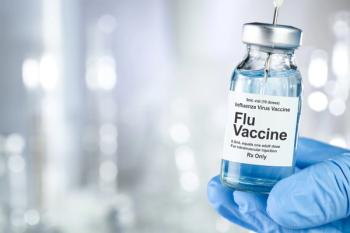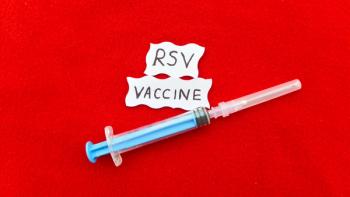
- February 2018 Infectious Disease
- Volume 84
- Issue 2
Self-Care for the Prevention and Treatment of Infectious Diseases
How can pharmacists assist patients with preventing and treating infectious diseases?
Case 1: Self-Care for Giardiasis Symptoms
FL, a 28-year-old man, calls the pharmacy asking for a recommendation to treat gastrointestinal symptoms. He recently returned from a 3-week backpacking and camping trip across Europe, during which he developed abdominal cramps, diarrhea, and weakness that lasted several days, causing him to cut his travels short. Upon returning home, FL visited his physician. A stool specimen revealed a diagnosis of giardiasis, for which he has been prescribed treatment with metronidazole. FL has no allergies to medications and takes no other medications, but he wants to know whether there is anything else he should be doing until the metronidazole starts to work.
What information should you provide him regarding self-management of his symptoms?
Case 2: Vaginal Yeast Infection or Something Else?
AK, a 23-year-old woman, wants a recommendation for a medication to treat her vaginal discharge. She reports experiencing a thin, gray vaginal discharge and a 'fishy' odor for the past 2 days. AK is not taking any prescription medications and does not recall being treated for any type of vaginal disorder previously. She discloses that she has a new sexual partner and would like to remedy this problem as quickly as possible to avoid further embarrassment. Based on AK’s symptoms, what is her most likely diagnosis? Is she a candidate for self-care?
What recommendations should you provide?
Case 3: Head Lice Management
ED, a 36-year-old woman, asks for a recommendation for a head lice treatment for her 2 daughters, aged 4 and 6 years old. The girls came home from school with a medical note advising that a classmate had received a diagnosis and been treated for head lice infestation. ED wants to pretreat her daughters to prevent them from contracting lice. She is concerned that because they often hug each other, put their heads close together, and store their coats, hats, and other shared objects in a communal closet, her daughters may contract lice.
What advice would be reasonable to share with ED regarding head lice prevention?
Case 4: Influenza Vaccine Efficacy
TH, a 57-year-old woman, wants advice regarding this season’s influenza vaccine. She reports that she has been watching the news and that, while she understands that this is a "bad' flu season, she also heard that the vaccine is ineffective and that there is no point in becoming immunized because the activity is already widespread. TH has hypertension and dyslipidemia, managed with prescriptive treatments, but is otherwise healthy and a nonsmoker.
What self-care recommendations or advice on receiving the influenza vaccine should you offer?
SEE THE ANSWERS BELOW
Case 1: Giardiasis, caused by the protozoan parasite Giardia intestinalis, is one of the most common causes of acute diarrheal illness among international travelers.1,2 This pathogen is most commonly transmitted via the fecal-oral route, typically through drinking contaminated drinking water or partaking in recreational water activities in contaminated water, person-to-person contact, or eating food prepared by infected food handlers. Exposure to contaminated water used in food preparation or irrigation may also contribute.1,2 Although many patients remain asymptomatic, symptoms develop 1 to 2 weeks after infection and usually resolve within 4 weeks. This patient’s reports of abdominal cramping, diarrhea, and weakness are not uncommon. Other symptoms include anorexia, bloating, dehydration, fatigue, flatulence, nausea, and passing greasy, foul-smelling stools.1,2 Although a 5- to 10-day course of antibiotics may be warranted, given FL’s symptoms, it is prudent to remind him to pick up an oral rehydration solution to prevent dehydration due to the frequency of bowel movements and to consider adjunctive loperamide or bismuth subsalicylate to reduce the frequency of loose stools. Other strategies for preventing giardiasis include practicing good handwashing hygiene; avoiding contaminated water, whether for drinking or recreation, when traveling in areas where Giardia may be endemic or in the wild (because this individual was backpacking, discussing water purification is important); avoiding contaminated food or foods that may have been prepared using contaminated water; and cleaning and disinfecting the home if a dog or cat is diagnosed with the illness.1,2
Case 2: From the patient’s description, it appears that AK is suffering not from a vaginal yeast infection or vulvovaginal candidiasis but, more likely, from bacterial vaginosis, a polymicrobial infection of the vagina attributed to an increase in Gardnerella vaginalis and anaerobic organisms and a reduction in the normal colonization of Lactobacillus species.3 Although patients suffering from vaginal yeast infections typically experience severe pruritus, irritation, and a thick, white discharge, bacterial vaginosis is classically associated with a thin or watery malodorous discharge that increases after intercourse or with menses.3 Nonprescription vaginal antifungal products will not alleviate symptoms of bacterial vaginosis. In AK’s case, recommend referral to her primary care provider or gynecologist for evaluation and treatment with a vaginal antibacterial preparation.
Case 3: Receipt of notification of a head lice infestation at a school or day care center causes anxiety for any parent or caregiver. The parasitic louse feeds on human blood and lives close to its food source, usually on the scalp or in the eyebrows or eyelashes. If removed from the scalp and unable to feed, head lice survive less than 1 to 2 days.4 Although lice are a great nuisance and the itching can cause pruritus, sores, and secondary bacterial skin infections from scratching; irritability; and difficulty sleeping, they do not spread infectious disease. Lice do not hop or jump. Transmission occurs only by direct head-to-head contact with affected individuals or, less commonly, through the use of shared personal items that came in contact with the affected individual’s scalp.4 Educate ED about the symptoms of head lice and encourage her to check her daughters’ scalps for nits (white or yellow eggs found at the base of the hair) or live lice. If there are no signs of an active infestation and the children are asymptomatic, there is no role for prophylactic administration or treatment with OTC pediculicides. It is prudent, however, to offer strategies to prevent transmission of head lice and encourage ED to share these tips with her children—namely, avoiding head-to-head contact during play; not sharing personal items such as combs, hair accessories, hats, and scarves; and not sharing mats, pillows, and stuffed animals that have been used by an individual diagnosed with an infestation.4
Case 4: As of the week ending December 30, 2017, the CDC reported widespread influenza activity throughout the United States. The majority of positive influenza specimens at this point are from the influenza A subtype H3N2, or A(H3N2), viruses, with cumulative data for the influenza season suggesting 90.4% of positive specimens of this type and subtype.5 It is not too late to advise TH to consider immunization. Vaccination is recommended to continue while the virus circulates, and the peak and duration of this year’s season have yet to be determined.6 In a recent health alert,7 the CDC acknowledged lower vaccine effectiveness against the A(H3N2) virus compared with other circulating influenza viruses and suggested that, if symptoms such as body aches, chills, cough, fatigue, fever, and sore throat occur, patients should be evaluated by their primary health care providers as soon as possible and initiate antiviral drug therapy within 2 days of the onset of symptoms, if indicated.
Mary Barna Bridgeman, PharmD, BCPS, BCGP, is a clinical associate professor at the Ernest Mario School of Pharmacy, Rutgers University in Piscataway, New Jersey, and an internal medicine clinical pharmacist at Robert Wood Johnson University Hospital in New Brunswick, New Jersey.
Rupal Patel Mansukhani, PharmD, is a clinical associate professor at the Ernest Mario School of Pharmacy, Rutgers University in Piscataway, New Jersey, and a transitions-of-care clinical pharmacist at Morristown Medical Center in Morristown, New Jersey.
References
- Fullerton KE, Yoder JS. Giardiasis. In: CDC. CDC Yellow Book 2018: Health Information for International Travel. New York, New York: Oxford University Press; 2017. wwwnc.cdc.gov/travel/yellowbook/2018/infectious-diseases- related-to- travel/giardiasis. Accessed January 9, 2018.
- CDC. Parasites-Giardiasis: general information. CDC website. cdc.gov/parasites/giardia/general-info.html. Updated July 21, 2015. Accessed January 5, 2018.
- Lodise NM. Warts. In: Krinsky DL, Ferreri SP, Hemstreet BA, et al, eds. Handbook of Nonprescription Drugs: An Interactive Approach to Self-Care. 19th ed. Washington, DC: American Pharmacists Association; 2017:131-46.
- CDC. Parasites - lice - head lice: frequently asked questions (FAQs). CDC website. cdc.gov/parasites/lice/head/gen_info/faqs.html. Updated September 1, 2015. Accessed January 6, 2018.
- CDC. Influenza (flu): weekly U.S. influenza surveillance report. CDC website. cdc.gov/flu/weekly/index.htm. Updated January 12, 2018. Accessed January 16, 2018.
- Grohskopf LA, Sokolow LZ, Broder KR, et al. Prevention and control of seasonal influenza with vaccines: recommendations of the Advisory Committee on Immunization Practices—United States, 2017-18 influenza season. MMWR Recomm Rep. 2017;66(2):1-20. doi: 10.15585/mmwr.rr6602a1.
- CDC. Emergency preparedness and response: seasonal influenza A(H3N2) activity and antiviral treatment of patients with influenza. CDC website. emergency.cdc.gov/han/han00409.asp. Published December 27, 2017. Accessed January 9, 2018.
Articles in this issue
over 7 years ago
Ticagrelor Interactionsalmost 8 years ago
The Expanding Health Benefits of Prebiotics and Probioticsalmost 8 years ago
Pet Peeves (February 2018)almost 8 years ago
Can You Read These Rxs? (February 2018)almost 8 years ago
ISMP Medication Error Safety Briefsalmost 8 years ago
Advancements Come With a Cost: Oral Chemotherapy Parity Lawsalmost 8 years ago
Are Opioids Our Only Drug Problem?almost 8 years ago
Authorizing Technician Activity When No Pharmacist Is Presentalmost 8 years ago
Case Studies (February 2018)almost 8 years ago
Generic Product News (February 2018)Newsletter
Stay informed on drug updates, treatment guidelines, and pharmacy practice trends—subscribe to Pharmacy Times for weekly clinical insights.




















































































































































































































